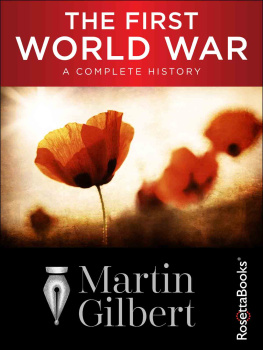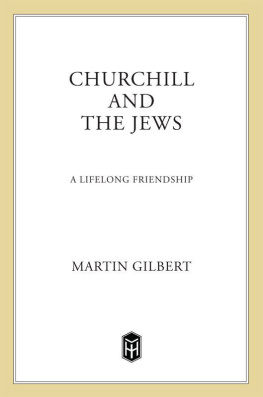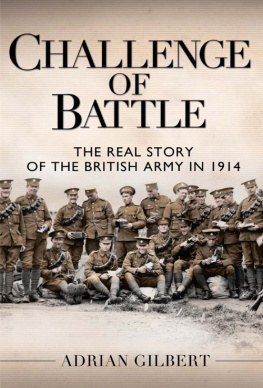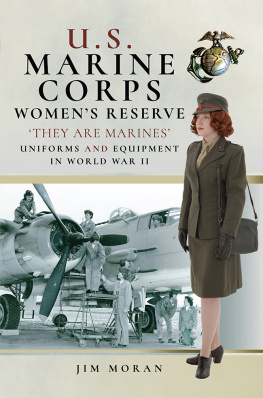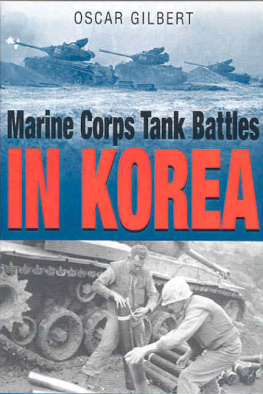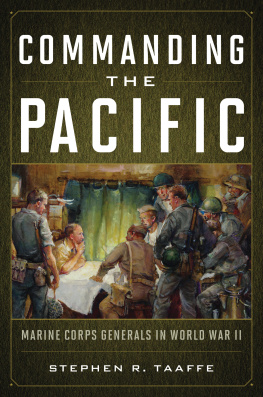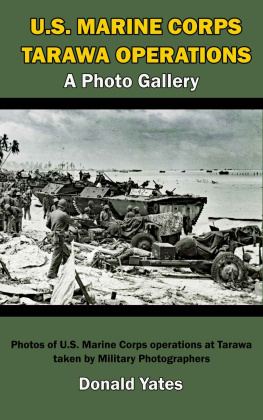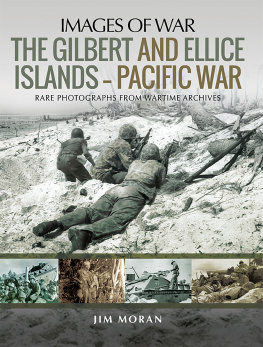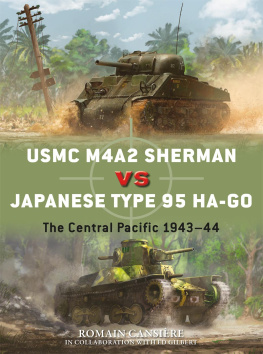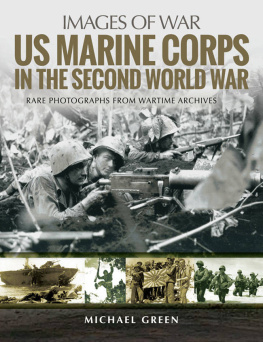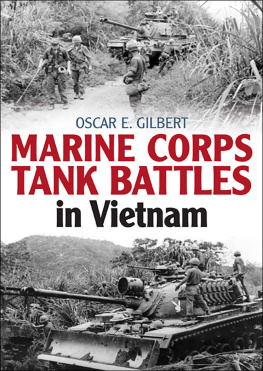

TANKS
IN HELL
A MARINE CORPS
TANK COMPANY
ON TARAWA

Oscar E. Gilbert & Romain Cansiere
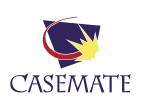
All rights reserved, including without limitation the right to reproduce this ebook or any portion thereof in any form or by any means, whether electronic or mechanical, now known or hereinafter invented, without the express written permission of the publisher.
Copyright 2015 by Oscar E. Gilbert & Romain Cansiere
978-1-5040-2171-5
Casemate Publishing
908 Darby Road
Havertown, PA 19083
www.casematepublishing.com

This edition distributed by Open Road Integrated Media, Inc.
345 Hudson Street
New York, NY 10014
www.openroadmedia.com

To the officers and men of Charlie Company, First Corps Medium
Tank Battalion and their families, and to Christiane.
ACKNOWLEDGMENTS

The effort to reconstruct the story of Charlie Company spanned nearly two decades.
Most of all we would like to acknowledge the help of the surviving veterans; they are listed individually in the Later Life section at the end of the book. Colonel Ed Bale (USMC, ret.) has been particularly patient with Ed Gilberts innumerable questions over the course of a quarter-century or so. Dan Josefson shared photographs from his fathers wartime album, and Ken Engstrom Sr. provided referrals to several veterans. John Oberg freely shared the results of his correspondence with veterans conducted over the course of many years. Hans Zeiger (http://generouspeople.blogspot.com/) provided family background information on Lieutenant Sloat, and additional contact information.
As usual, Annette Amerman and Kara Newcomer of the United States Marine Corps History Division at MCB Quantico provided immense help in locating documents and photographs, as did the staff of the National Archives II at College Park Maryland, particularly Molly Reed.
As always, Lieutenant Colonel Ken Estes (USMC, ret.) provided the authors with a trove of documents unearthed from many sources. Reagan Grau of the National Museum of the Pacific War (Fredericksburg, Texas) provided information and a behind-the-scenes tour of the museum and its relevant artifacts. Akira Takizawa (http://www3.plala.or.jp/takihome/) provided information on the Japanese tanks and weapons used at Tarawa.
General Daniel Postec, Colonel Jean-Francois Nicloux, Lieutenant Colonel Jean Louis Dubois, and Capitaine Philippe Dion made available the resources of the Muse du Gnral Estienne (Muse des Blinds tankmuseum) at Saumur, Franceparticularly their operational M4A2 tank MONTMIRAIL. Yvan Chollet advised on operating a damaged tank on one engine.
Major David Vickers (USMC, ret.) shared the preliminary results of his work using period photos to place the wreck sites of the individual medium tanks. Barbara Nevala and Kim Harrison provided additional photographs, and thanks to Bill Bartsch for his help in locating and photographing the remaining tank wreck on Betio.
Philip Wright sponsored the website tanksontarawa.com, the basis for much of Romain Cansieres early research. Jonathan Stevens (http://tarawa ontheweb.org/) provided interviews with veterans, photographs, and contact information. Pierre-Olivier Buan, Webmaster at (http://the.shadock.free.fr/sherman_minutia/), provided technical data on the M4A2 tank. Larry Martin (lmww2.com) and David Brown (Second Marine Division Association) provided additional information. Michael Hanz (aafradio.org) freely shared his knowledge of World War II radios, and helped Ed to plow through the complexities of 1940s radio communication systems. Jody Hewitt of the University of Florida Library System provided information from World War II era technical manuals.
Thanks to Bobby Horton of Bobby Horton Music (bobbyhorton.com) for providing the source of the lyrics for the song Long Ago.
Catherine Gilbert and Oscar E. Bill Gilbert III edited the first version of the manuscript. In her usual fashion Catherine also assisted Ed with his research at Quantico and College Park, and in tracking down information on the veterans later lives.
Romain gratefully acknowledges his mother, Christiane, who tolerated her sons peculiar interest in Marine Corps history, and who enabled him to travel to the United States for research. And thanks to Caroline for her extraordinary patience in the face of a novice authors behavior and Marine Corps passion.
Long ago we were boys in the ranks comrades,
Our hearts light and happy as the day,
Cheeks were ruddy, eyes bright, locks dark, comrades,
As we marched from our homes far away.
But now we are aged and gray comrades,
The trials of life are nearly done,
But to us lifes as dear as it was comrades,
When you and I were young.
Long Ago, VERSE ONE AND CHORUS
BY J. M. CARMICHAEL, 1902
(recorded by Bobby Horton Music)
A NOTE ABOUT THE PHOTOS IN THIS BOOK: The wrecked medium tanks on Tarawa were extensively photographed; most of those photos are available in a number of sources so only those specifically related to the text are reproduced here. Similarly, only selected aerial photos used in analysis are reproduced here for space reasons. Some period snapshots are not reproduced because resolution is inadequate for printing. Many of these photosparticularly personal snapshots showing the personnel of Charlie Companycan be seen at tanksontarawa.com, and tarawaontheweb.org. Other photos exist but resolution is too poor for publication, or the copyright provenance is unclear.
PREFACE

Romain Cansiere
TARAWA, IWO JIMA, ENIWETOK, and PELELIU are names unfamiliar to the French ear.
I knew very little about the Pacific war before starting this project. Although a couple of battles occurred between the Siamese (Thai) forces allied to Japan and the French colonial army, for the French our history sticks to what happened in Europe. We are more familiar with names such as Caen, Bastogne, Saint L, and Carentan, Allied victories near the end of the war.
The Pacific, for the French a forgotten theatre of operations, was interesting to me. Since my English was not of the best (I was then a teenager), I started to read French magazines or website articles. I quickly focused on the battle of Tarawa and the few medium tanks (fourteen) involved in it. Maybe the originality of the unit symbol and the limited number of tanks led me to that choice. I quickly realized that versions of what happened to the Shermans on Tarawa were contradictory.
When I was able to read and write better English, I bought US books and began to go through US websites on the subject. I found even more versions of the story of the tanks involved on Betio. In March 2012, I decided to investigate what really happened to that company. At that time, I contacted the United States National Archives for photos and official documents regarding Charlie Company, First Corps Medium Tank Battalion. I made some interesting discoveries including the Battalion after action report. That was the beginning of an adventure.
Next page

